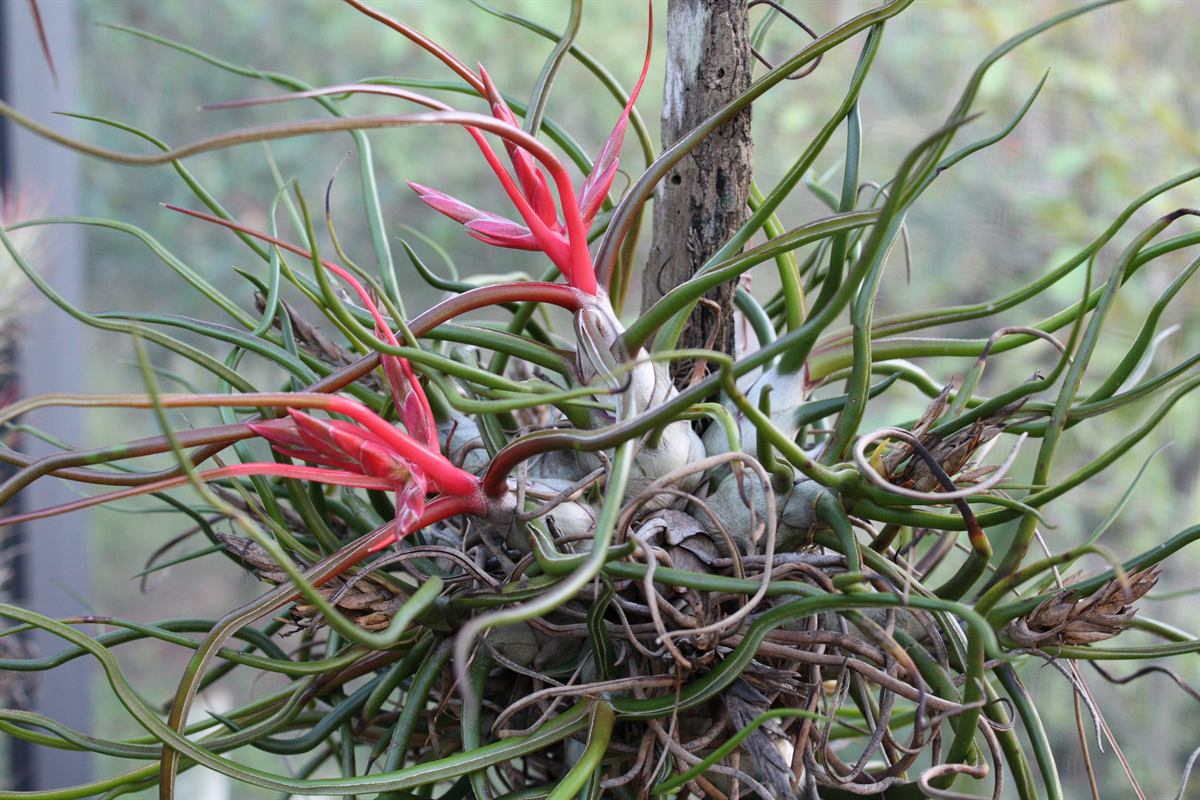Tillandsia tectorum. Photo by Edu licensed under CC BY-NC-ND 2.0
Air plants (genus Tillandsia) are remarkable organisms. All it takes is seeing one in person to understand why they have achieved rock star status in the horticulture trade. Unlike what we think of as a "traditional" plant lifestyle, most species of air plants live a life free of soil. Instead, they attach themselves to the limbs and trunks of trees as well as a plethora of other surfaces.
Living this way imposes some serious challenges. The biggest of these is the acquisition of water. Although air plants are fully capable of developing roots, these organs don't live very long and they are largely incapable of absorbing anything from the surrounding environment. The sole purpose of air plant roots is to anchor them to whatever they are growing on. How then do these plants function? How do they obtain water and nutrients? The answer to this lies in tiny structures called trichomes.
Trichomes are what gives most air plants their silvery sheen. To fully appreciate how these marvelous structures work, one needs some serious magnification. A close inspection would reveal hollow, nail-shaped structures attached to the plant by a stem. Instead of absorbing water directly through the leaf tissues, these trichomes mediate the process and, in doing so, prevent the plant from losing more water than it gains.
The trichomes themselves start off as living tissue. During development, however, they undergo programmed cell death, leaving them hollow. When any amount of moisture comes into contact with these trichomes, they immediately absorb that water, swelling up in the process. As they swell, they are stretched out flat along the surface of the leaf. This creates a tiny film of water between the trichomes and the rest of the leaf, which only facilitates the absorption of more water.
Trichomes up close. Photo by Mark Smith1989 licensed under CC BY-SA 4.0
Because the trichomes form a sort of conduit to the inside of the leaf, water and any nutrients dissolved within are free to move into the plant until the reach the spongy mesophyll cells inside. In this way, air plants get all of their water needs from precipitation and fog. Not all air plants have the same amount of trichomes either. In fact, trichome density can tell you a lot about the kind of environment a particular air plant calls home.
Photo by Bernard DUPONT licensed under CC BY-SA 2.0
The fuzzier the plant looks, the drier the habitat it can tolerate. Take, for instance, one of the fuzziest air plants - Tillandsia tectorum. This species hails from extremely arid environments in the high elevation regions of Ecuador and Peru. This species mainly relies on passing clouds and fog for its moisture needs and thus requires lots of surface area to collect said water. Now contrast that with a species like Tillandsia bulbosa, which appears to have almost no trichome cover. This smoother looking species is native to humid low-land habitats where high humidity and frequent rain provide plenty of opportunities for a drink.
Photo by Bocabroms licensed under CC BY-SA 3.0



